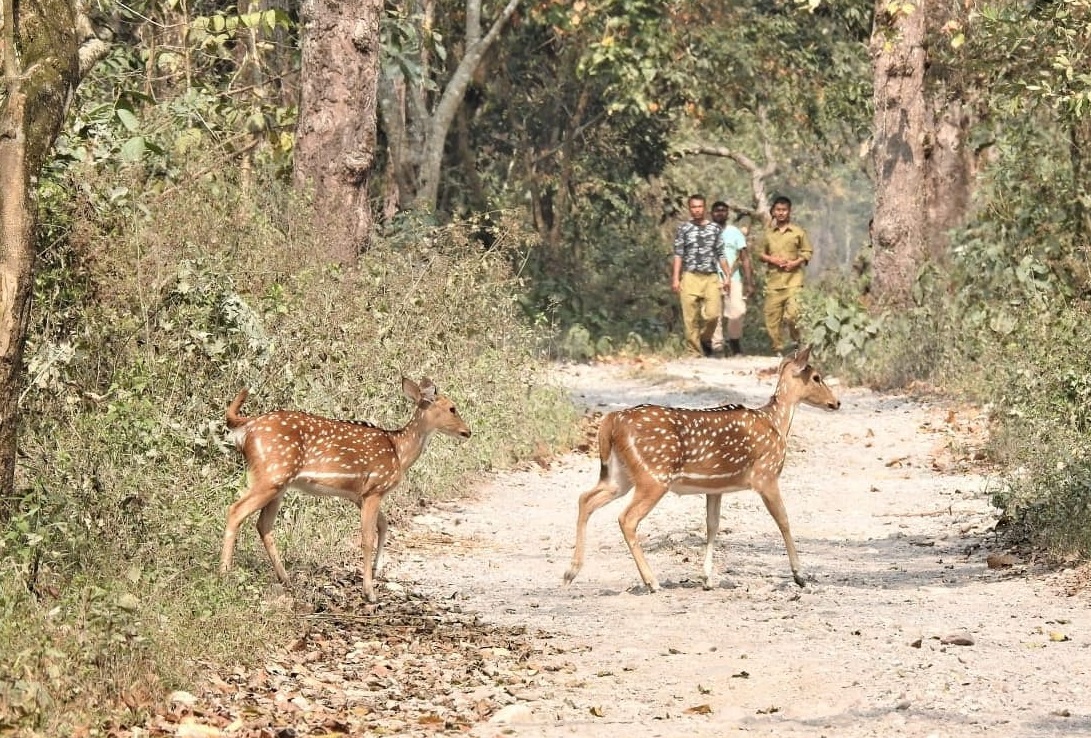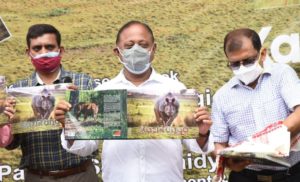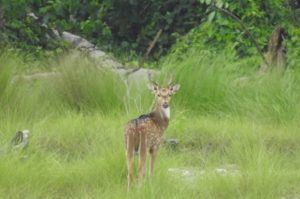NE UpdatesHappeningsBreaking News
Raimona with rich flora & fauna becomes Assam’s 6th new national park

June 5: Raimona national park has been added to Assam’s five existing national parks. An announcement to this effect was made by Assam Chief Minister, Dr.Himanta Biswa Sarma on the occasion of World Environment Day at Gandhi Mandap in Guwahati on Saturday. Dr Sarma said with the new addition, Assam has six national parks and that process is underway to convert Dehing Patkai wildlife sanctuary into a national park.
A landmark step in environment restoration by Govt of Assam.
On #WorldEnvironmentDay, a reserve forest in BTR has been declared as Raimona National Park. The newly declared National Park will be another addition to the State's endeavour in preserving its rich flora and fauna. pic.twitter.com/v4gjiGu8fl
— Himanta Biswa Sarma (@himantabiswa) June 5, 2021
Minister for Environment and Forest, Parimal Suklabaidya who attended the function along with Minister for GDD, Ashok Singhal, said the announcement made by the Chief Minister has turned out to be a red letter day for the state and welcome news for wildlife lovers, nature lovers and conservationists. He said process is also underway to upgrade Dehing Patkai wildlife sanctuary to a national park. The Environment and Forest department brought out a notification declaring Raimona as national park on Saturday.
 The Raimona national park that falls under Kokrajhar district of BTC is a part of contiguous forest patch with an area of 422 square km covering the northern part of the notified Ripu Reserve Forest (area of 508.62 square km), which forms the westernmost buffer to Manas Tiger Reserve in the southern foothills of Eastern Himalaya Biodiversity Hotspot.
The Raimona national park that falls under Kokrajhar district of BTC is a part of contiguous forest patch with an area of 422 square km covering the northern part of the notified Ripu Reserve Forest (area of 508.62 square km), which forms the westernmost buffer to Manas Tiger Reserve in the southern foothills of Eastern Himalaya Biodiversity Hotspot.
 The boundary of Raimona national park, which forms with the Sonkosh River on the west along the inter-state boundary of West Bengal and Assam from Indo-Bhutan border up to fire line Ride-6 southwards (BP30) and Saralbhanga River on the east, runs northwards till it touches the Indo-Bhutan international boundary on the north and remaining part of Ripu RF on the south. The southern boundary runs eastwards along the fire line Ride-6 up to Pekua River where it runs at 90 degrees southwards till it meets the fire line Ride-3. “Historically, the area was a part of the migratory route of the faunal species from Himalayan Mountain, Indo-Malayan and Indo-Chinese realms towards west and Peninsular Indian realm species to the east, ” said a forest official.
The boundary of Raimona national park, which forms with the Sonkosh River on the west along the inter-state boundary of West Bengal and Assam from Indo-Bhutan border up to fire line Ride-6 southwards (BP30) and Saralbhanga River on the east, runs northwards till it touches the Indo-Bhutan international boundary on the north and remaining part of Ripu RF on the south. The southern boundary runs eastwards along the fire line Ride-6 up to Pekua River where it runs at 90 degrees southwards till it meets the fire line Ride-3. “Historically, the area was a part of the migratory route of the faunal species from Himalayan Mountain, Indo-Malayan and Indo-Chinese realms towards west and Peninsular Indian realm species to the east, ” said a forest official.
 The new national park shares contiguous forest patches of Phipsoo Wildlife Sanctuary and Jigme Singye Wangchuk National Park in Bhutan (total area of 1,999 square km) creating a transboundary conservation landscape of more than 2,400 square km. “Such secured transboundary ecological landscape will ensure long term conservation of endemic species like Golden Langur Trachypithecus geei – the mascot of BTC – and endangered species like Asian Elephant Elephas maximus, Royal Bengal Tiger Panthera tigris and varied other flora and faunal species it supports,” said the forest official.
The new national park shares contiguous forest patches of Phipsoo Wildlife Sanctuary and Jigme Singye Wangchuk National Park in Bhutan (total area of 1,999 square km) creating a transboundary conservation landscape of more than 2,400 square km. “Such secured transboundary ecological landscape will ensure long term conservation of endemic species like Golden Langur Trachypithecus geei – the mascot of BTC – and endangered species like Asian Elephant Elephas maximus, Royal Bengal Tiger Panthera tigris and varied other flora and faunal species it supports,” said the forest official.
 The new national park forms the westernmost buffer to the Manas Tiger Reserve (TR) which is one of the nine such reserves in India first declared by Project Tiger in 1973. The area is also the integral part of Manas Biosphere Reserve (BR) and Chirang-Ripu Elephant Reserve (ER). The Manas national park is located in the heart of the TR cum ER which is also a natural World Heritage Site.
The new national park forms the westernmost buffer to the Manas Tiger Reserve (TR) which is one of the nine such reserves in India first declared by Project Tiger in 1973. The area is also the integral part of Manas Biosphere Reserve (BR) and Chirang-Ripu Elephant Reserve (ER). The Manas national park is located in the heart of the TR cum ER which is also a natural World Heritage Site.
 “The new national park will open up huge opportunities of ecotourism for the fringe villagers, who currently are partially or totally dependent on forest resources for their livelihood. A highly viable tourism circuit through the Raimona national park and the contiguous protected areas of Bhutan will attract national and international tourists, who will not only enjoy the wildlife and outstanding scenic beauty but also the diverse and colourful social landscapes and their rich culture and tradition, quipped the official.
“The new national park will open up huge opportunities of ecotourism for the fringe villagers, who currently are partially or totally dependent on forest resources for their livelihood. A highly viable tourism circuit through the Raimona national park and the contiguous protected areas of Bhutan will attract national and international tourists, who will not only enjoy the wildlife and outstanding scenic beauty but also the diverse and colourful social landscapes and their rich culture and tradition, quipped the official.





